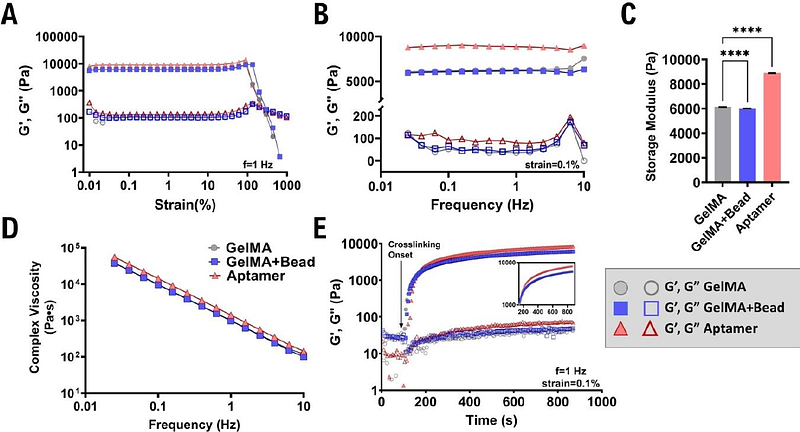Bioprinting of aptamer-based programmable bioinks to modulate multiscale microvascular morphogenesis in 4D

Bioprinting of aptamer-based programmable bioinks to modulate multiscale microvascular morphogenesis in 4D
Rana, D.; Rangel, V. R.; Padmanaban, P.; Trikalitis, V. D.; Kandar, A.; Kim, H.-W.; Rouwkema, J.
AbstractDynamic growth factor presentation influences how individual endothelial cells assemble into complex vascular networks. Here, we developed programmable bioinks that facilitate dynamic VEGF presentation to guide vascular morphogenesis within 3D-bioprinted constructs. We leveraged aptamers\' high affinity for rapid VEGF sequestration in spatially confined regions and utilized aptamer-complementary sequence (CS) hybridization to tune VEGF release kinetics temporally, days after bioprinting. We show that spatial resolution of programmable bioink, combined with CS-triggered VEGF release, significantly influences the alignment, organization, and morphogenesis of microvascular networks in bioprinted constructs. The presence of aptamer-tethered VEGF and the generation of instantaneous VEGF gradients upon CS-triggering restricted hierarchical network formation to the printed aptamer regions at all spatial resolutions. Network properties improved as the spatial resolution decreased, with low-resolution designs yielding the highest network properties. Specifically, CS-treated low-resolution designs exhibited significant vascular network remodeling, with the increase in vessel density(1.35-fold), branching density(1.54-fold), and average vessel length(2.19-fold) compared to non-treated samples. Our results suggest that CS acts as an external trigger capable of inducing time-controlled changes in network organization and alignment on-demand within spatially localized regions of a bioprinted construct. We envision that these programmable bioinks will open new opportunities for bioengineering functional, hierarchically self-organized vascular networks within engineered tissues.


